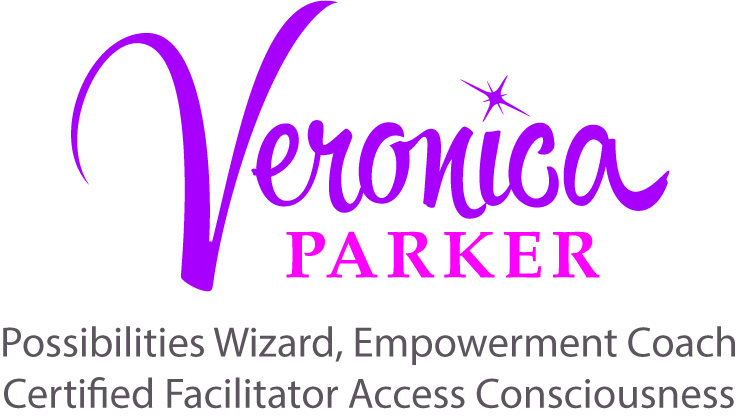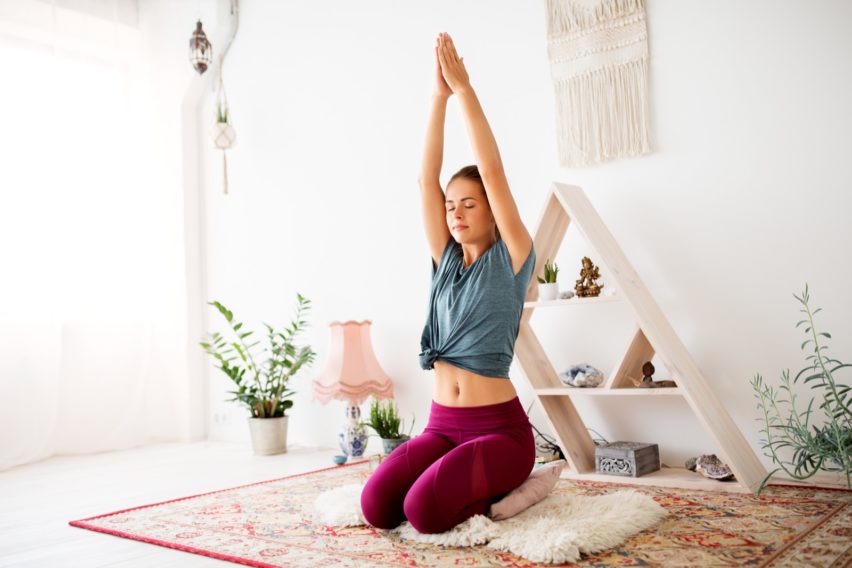An article by with guest expert Veronica Parker. This article originally appeared on Prevention.com.
From Vinyasa to Ashtanga to Katonah, there are many different types of yoga. But one variation that’s become increasingly popular recently is Kundalini yoga. The reason: Proponents of the practice say it gives them a serious energy boost and helps them de-stress. Some people even say it’s increased their passion and purpose in life.
Sound too good to be true? We thought so too, which is why we tapped top yoga instructors to find out more about the benefits of the practice. Keep reading to learn exactly what Kundalini yoga is, what it can do for you, and beginner poses to help you get started.
What is Kundalini yoga, exactly?
Just like any yoga class, you can expect to be downward dogging and planking, but what sets Kundalini yoga apart from other types of yoga is its focus on using your breath to harness energy within you. Through meditation, chanting, and singing, Kundalini yoga enhances your practice by promoting more self-awareness and stillness.
“What gives the practice great intensity is the powerful use of breath, as well as the length of time that each pose is held,” says Veronica Parker, a wellness mindset coach and certified Kundalini yoga instructor in Voorhees, New Jersey. In a traditional Kundalini yoga class, the poses, breath, and chanting are strung together in a sequence called a Kriya.
What are the benefits of Kundalini yoga?
There are thousands of Kriyas in Kundalini yoga, and each pose within a Kriya is specifically designed to strengthen different systems in the body, such as the endocrine or nervous system, says Parker.
“When practicing Kundalini yoga in a deliberate way, you are building your nervous system to handle and integrate the powerful life force energy inherent to your body,” says Kristen Fletcher, a Kundalini and Yoga Alliance-certified instructor in New York City.
It may sound a little woo-woo but there’s science to backs up these claims: A 2018 study from the International Journal of Yoga Therapy suggests that Kundalini yoga can help reduce symptoms of generalized anxiety disorder, soothing feelings of restlessness and edginess. Moreover, a 2017 study, which followed 26 people taking Kundalini yoga classes for three months, found that practicing this form of yoga can help decrease cortisol levels and perceived stress. And finally, some research suggests that Kundalini yoga may also help prevent cognitive decline and ease depression symptoms.
The positive effects of Kundalini yoga on mental health, in particular, can make a big difference in the way you approach life, which brings us to our next point: the Kundalini awakening.
What is a Kundalini awakening?
Many people who practice Kundalini yoga claim to experience a Kundalini awakening, which is described as when the life force energy inside you rises from the base of the spine. You know you’re having a Kundalini awakening when you have increased energy, vitality, clarity of mind, and greater awareness, Parker says. This fleeting feeling allows you to focus on opportunities in life, instead of the problems standing in your way.
“In general, you can feel a sense of lightness within, and you will notice your mind is clearer and you don’t have as many thoughts and chatter running through it,” Parker explains. “You won’t have as many worries or fears, and you will feel more at peace.”
During a Kundalini awakening, people might feel their body shaking or heating up as the energy moves through the body and spine, Fletcher says.
Is Kundalini yoga a good workout?
While the goal of Kundalini yoga isn’t necessarily to improve strength and flexibility like other types of yoga, it’s still a good workout because it has unique variations of popular yoga poses that can challenge your body in new ways. Most Kundalini yoga classes are also more than an hour-long—sometimes 90 minutes—so you’ll be active for quite some time.
“In my experience, and that of my students, Kundalini yoga can help you get fit, flexible and strong,” Parker says. “I’ve had plenty of students who have practiced Hatha or Power yoga and feel challenged after doing a Kundalini yoga class.”
What to expect at your first Kundalini yoga class
There are some classic poses and chants your teacher will likely guide you through. “Before practicing Kundalini, we chant, ‘Ong Namo Guru Dev Namo,’ which roughly translates to ‘I bow to the subtle wisdom, the divine teacher within,'” Fletcher says. This helps you set an intention for each practice and puts you in the right mindset before you run through the Kriyas.
Because Kundalini yoga heavily focuses on the breath, you can also expect to practice a breathing technique known as breath of fire. “Breath of fire is an equal inhale and exhale through the nose, without any pauses. Exhaling should be done powerfully through the nose while pressing the navel point toward the spine,” Parker says. “You can choose how fast or slow you want to do it. The most important point is to have an equal inhale and exhale, as energized breath powerfully releases toxins while strengthening the nervous system.”
Think of breath of fire like a dog panting, pumping air in and out of your mouth and pressing the navel to the spine. Start practicing breath of fire for one minute and then slowly increase to three minutes. Once you get the hang of this form of breathing, you can close your mouth and breathe in through your nose.
Kundalini yoga poses for beginners
Since the foundation of Kundalini yoga is based on energy coming from the spine, it’s no surprise that many of the poses you’ll do in class emphasize improving the strength and flexibility of the posterior chain. Cat-cow, spinal flex, and spinal twists are common yoga poses that you will also find in beginner Kundalini yoga classes.
Some yoga poses are unique to the practice, however, like Kundalini yoga frogs. “This is a great pose to enhance energy and vitality, as it helps move the energy from the first three body centers (chakras) up in the spine,” Parker says.
How to do a Kundalini yoga frog
- Stand up tall on a yoga mat and place your heels together with your toes turned out.
- Lower down into a squat, raising your heels off the mat but still keeping them together.
- Place your fingertips on the mat in front of you and align your knees over your toes.
- Inhale as you raise your hips up towards the sky and straighten your legs.
- Exhale and return to the squat position.
Another classic Kundalini yoga pose is the archer. “This move develops your navel center, your strength of will, and courage,” Fletcher says. “It builds up your radiant body, which attracts opportunity and prosperity into your life.”
How to do the archer pose
- Step your right foot forward with the toes facing the front of the mat and your left foot back, about two to three feet away. Turn your left foot 45 degrees with your heel back and your toes forward.
- Bend your right knee and curl your fingers into the palms, thumbs up.
- Pull your left elbow back like you are pulling a bow and arrow, with the left fist near the left shoulder, and the right arm extended forward parallel to the ground.
- Focus your gaze beyond the right thumb to infinity.
Lastly, you can’t leave a Kundalini class without doing the ego eradicator. It’s like leaving a yoga class without doing savasana. “This pose is beneficial because it opens the lungs, consolidates the magnetic field and brings the brain hemispheres to a state of alertness, in addition to strengthening the nervous system to better handle stress,” Fletcher says.
How to do the ego eradicator
- On a yoga mat, sit cross-legged and raise your arms up to a 60-degree angle out to the sides, keeping the elbows straight and the shoulders down.
- Move your head back in space to create a neck lock.
- Curl your fingertips into the base of your fingers, stretch your thumbs back, and point them toward each other. Keep your eyes close and your focus above your head.
- Begin the breath of fire, keeping your breath rapid and rhythmic.
- Inhale deeply and raise your thumb tips to touch overhead. Then, open your thumbs out.
- Exhale and relax your arms down by your sides.
How to find a Kundalini yoga class near you
Ready to try Kundalini yoga? Contact your local yoga studio to see if they offer it; if not, ask if they can refer you to a studio that does. Otherwise, check out an online streaming service, like Gaia’s Kundalini yoga courses, Kundalini Live, and RA MA TV, which offer classes you can do at home. Namaste!


